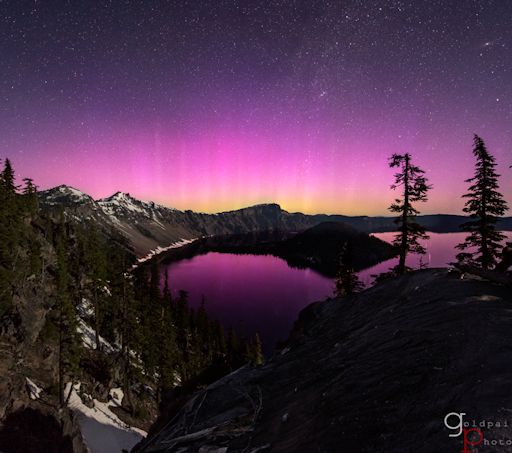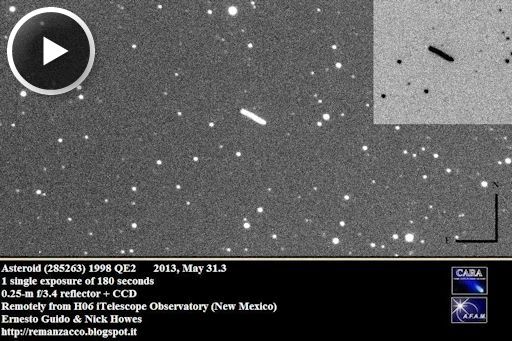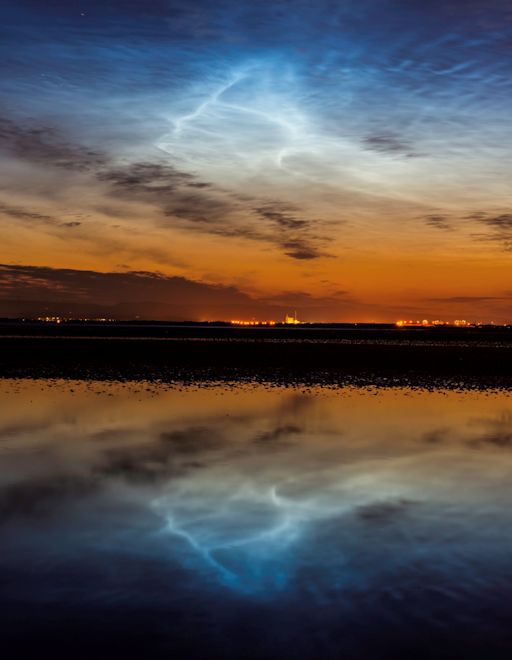They came from outer space--and you can have one! Genuine meteorites are now on sale in the Space Weather Store. | | |
GEOMAGNETIC STORM, SUBSIDING: Earth's magnetic field is calming down on June 1st following nearly 15 hours of non-stop geomagnetic storming. The storminess was caused by the arrival of an interplanetary shock wave on May 31st (1618 UT). The source of the shock is unknown. Current speculation focuses on a corotating interaction region (CIR)--that is, a shock-like transition zone between high- and low-speed solar wind streams. Whatever it was, the impact ignited some beautiful auroras. More storms could be in the offing tonight as the solar wind continues to blow faster than 600 km/s. Aurora alerts: text, voice.
AURORAS IN THE USA: Last night, Northern Lights spilled across the Canadian border into more than a dozen US states, turning the sky purple and green as far south as Colorado and Nebraska. Subscribers to the Space Weather Alert System (text, voice) knew the storm was coming, but others were surprised:
"Last night, I drove to Crater Lake National Park to photograph the Milky Way rising above the rim," reports Oregon photographer Brad Goldpaint. "I was staring upward towards a clear night sky when suddenly, without much warning, the aurora borealis began erupting in front of me." (continued below)

"With adrenaline pumping, I raced to the edge of the caldera, set up a time-lapse sequence, and watched northern lights dance until sunrise," he continues. "The moon rose around 2am and blanketed the surrounding landscape with a faint glow, adding depth and texture to the shot."
High-latitude sky watchers should remain alert for auroras tonight as Earth's magnetic field continues to reverberate from the impact. NOAA forecasters estimate a 40% chance of polar geomagnetic storms on June 1st. Aurora alerts: text, voice.
Realtime Aurora Photo Gallery
BINARY ASTEROID FLYBY: Massive asteroid 1998 QE2 and its moon flew past Earth on May 31st only 5.8 million kilometers away. Using a remotely controlled 10-inch telescope in New Mexico, Ernesto Guido & Nick Howes photographed the binary space rockaround the time of closest approach:

The 2.7-km-wide asteroid is receding from Earth now. Ironically, it will become easier to see in the nights ahead. 1998 QE2 is turning its sunlit side toward Earth, so it is growing brighter as it recedes. At maximum brightness on June 3rd and 4th, it will shine as brightly as a 10th or 11th magnitude star, an easy target for mid-sized backyard telescopes.
While amateur astronomers watch 1998 QE2 glide through the constellations Libra and Ophiuchus, NASA radars will be pinging the space rock with powerful bursts of radio energy, obtaining images so crisp they will rival those of previous asteroid-spacecraft flybys. In this case, Earth is the spaceship! Stay tuned for updates.
Realtime Space Weather Photo Gallery
NOCTILUCENT CLOUDS: On May 30-31, sky watchers across northern Europe witnessed a vivid display of noctilucent ("night-shining") clouds. M. J. S. Ferrier photographed the electric-blue ripples from Barassie Beach in Troon, Scotland:

Noctilucent clouds (NLCs) form near the top of Earth's polar atmosphere when water vapor from the planet below mixes with meteor debris from space. They appear during summer because that is when the mesosphere is coldest and most humid. This year, NLCs appeared early, more than a full month before the solstice, setting the stage for an unusually good NLC-watching season.
High latitude sky watchers should be alert for NLCs in the evenings ahead. In recent years they have been sighted as far south as Utah, Colorado, and Nebraska. Observing tips: Look west 30 to 60 minutes after sunset when the sun has dipped 6o to 16o below the horizon. If you see luminous blue-white tendrils spreading across the sky, you've probably spotted a noctilucent cloud.
Realtime Noctilucent Cloud Photo Gallery
[previous years: 2003, 2004, 2005, 2006, 2007, 2008, 2009, 2011]
Realtime Comet Photo Gallery

